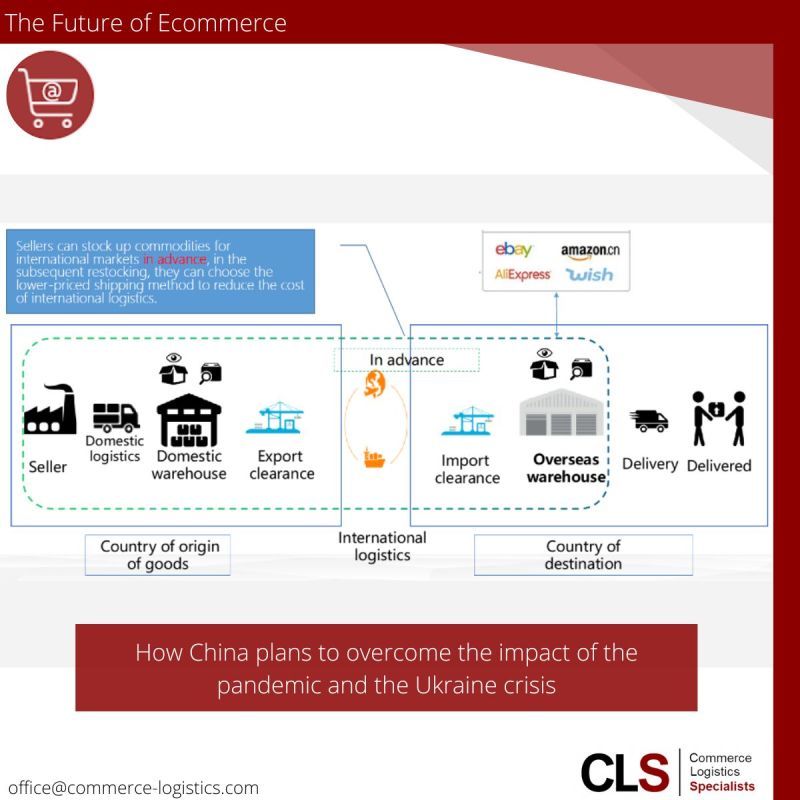Digital Silk Road 2.0 – How China plans to overcome the impact of the pandemic and the Ukraine crisis

#Asia (and in particular China) has become the most developed #ecommercemarket worldwide. #China alone accounts for more than 50% of global #ecommercesales and dominates the cross-border ecommerce sector by a wide #margin.
This rapidly growing cross-border #ecommerce was based on two pillars – most of the #volumes were shipped directly, i.e., from Asia to the major #import markets such as the #EU or the #USA, while other goods were held within the #customs areas in a local #warehouse #infrastructure.
𝗦𝗲𝘃𝗲𝗿𝗮𝗹 𝗰𝗵𝗮𝗹𝗹𝗲𝗻𝗴𝗲𝘀 𝗵𝗮𝘃𝗲 𝗰𝗮𝘂𝘀𝗲𝗱 𝗮 𝘀𝗶𝗴𝗻𝗶𝗳𝗶𝗰𝗮𝗻𝘁 𝗱𝗿𝗼𝗽 𝗶𝗻 𝘃𝗼𝗹𝘂𝗺𝗲𝘀…
However, this flow of goods has been impacted by the #pandemic, by the new customs #regulations in the USA and the EU, by increasing #postal tariffs, and by the #impact of the #Ukrainecrisis. The result has been a 20-30% #decline in ecommerce #shipments from Asia to major markets.
…𝗮𝗻𝗱 𝗵𝗮𝘃𝗲 𝗹𝗲𝗱 𝘁𝗼 𝗮 𝗻𝗲𝘄 𝘀𝘁𝗿𝗮𝘁𝗲𝗴𝗶𝗰 𝗶𝗻𝗶𝘁𝗶𝗮𝘁𝗶𝘃𝗲 𝗯𝘆 𝗖𝗵𝗶𝗻𝗮
The main #problem has been correctly identified as the particularly vulnerable „2nd leg“ – #international #transport & #logistics from Asia to the major import markets.
Consequently, one of China’s initiatives is to store as many #goods as possible in the recipient’s own #customs area. This #model is not new. What is new, however, is that these #warehouses, previously operated by different logistics #serviceproviders, are now being unified and digitally integrated. Using harmonised #datastandards allows the entire #infrastructure to be controlled, creating a globally interconnected and managed #storage and #warehouse infrastructure which can be opened to all #suppliers.
𝗡𝗲𝗶𝘁𝗵𝗲𝗿 𝘁𝗵𝗲𝗼𝗿𝘆 𝗻𝗼𝗿 𝘃𝗶𝘀𝗶𝗼𝗻 – 𝗷𝘂𝘀𝘁 𝗿𝗶𝗴𝗼𝗿𝗼𝘂𝘀 𝗶𝗺𝗽𝗹𝗲𝗺𝗲𝗻𝘁𝗮𝘁𝗶𝗼𝗻
The China Council for the Promotion of International Trade (#CCPIT) initiative to turn this vision into reality has already been launched. The Standardization Administration of the People’s Republic of China (#SAC) has proposed a new Work Item in #ISO – “#Guidelines for overseas warehouse #services in cross-border #trade”. Based on the considerable #influence of Chinese #regulation, this will #result in the #creation of a #global, #uniform and semi-open #logistics infrastructure.
This initiative naturally poses a #challenge for European/US suppliers: it #effectively removes some #competitive and locational #advantages currently enjoyed by Europe and the US, plus China is extremely competitive in terms of #digital #competence and #capitalinvestment.
Click here for the LinkedIn-Article.

Walter Trezek
Document Exchange Network GmbH

